
|
Use special tool front hub and flange yoke holder (MB990767) to counter the hub as shown
in the figure to remove the driveshaft nut.
|
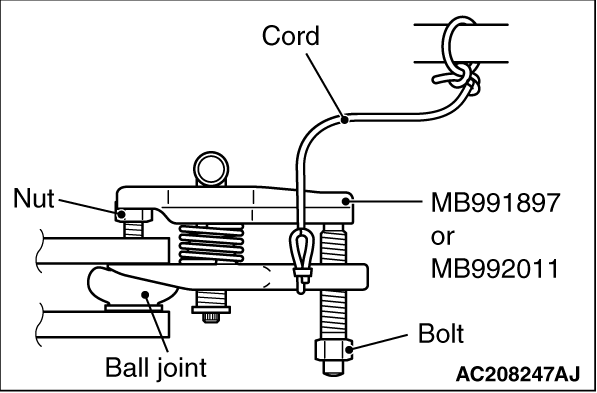
|
1.
| caution |
- Loosen the self-locking
nut (tie-rod end connection) from the ball joint, but do not remove here. Use the special tool.
- To prevent the special tool from dropping off, suspend it with a rope.
|
Install special tool ball joint remover (MB991897 or MB992011) as shown in the figure.
|
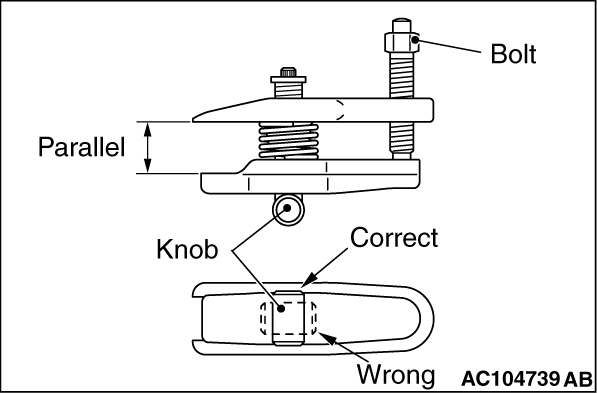
|
2.Turn the bolt and knob to make the special tool jaws parallel, then hand-tighten the bolt.
After tightening, check that the jaws are still parallel.
| note |
To adjust the special tool jaws to be parallel, set the orientation of the knob as shown
in the figure.
|
3.Unscrew the bolt to disconnect the ball joint.
|

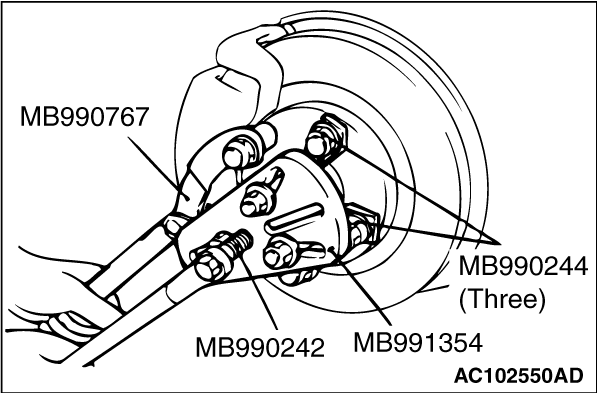
|
1.
| caution |
- The wheel speed detection magnetic encoder collects metallic
particles easily, because it is magnetised. Make sure that the magnetic encoder does not collect metallic
particles.
- When removing the driveshaft, make sure that it does not contact with the wheel
speed detection magnetic encoder (integrated with the inner oil seal) to avoid damage.
|
If the driveshaft is seized with the hub, use the following special tools to push the
driveshaft assembly out from the hub:
- Puller shaft (MB990242)
- Puller bar (MB990244)
- Front hub and flange yoke holder (MB990767)
- Puller body (MB991354)
|

|
2.While pulling the lower side of the brake disc toward you, remove the driveshaft assembly
from the hub.
| caution |
- Never pull out the driveshaft
assembly from the EBJ assembly side. Otherwise, the PTJ assembly may be damaged. Always pull
out from the PTJ side with a lever.
- Care must be taken to ensure that the oil seal of the transmission is not damaged
by the spline part of the driveshaft assembly.
|
|
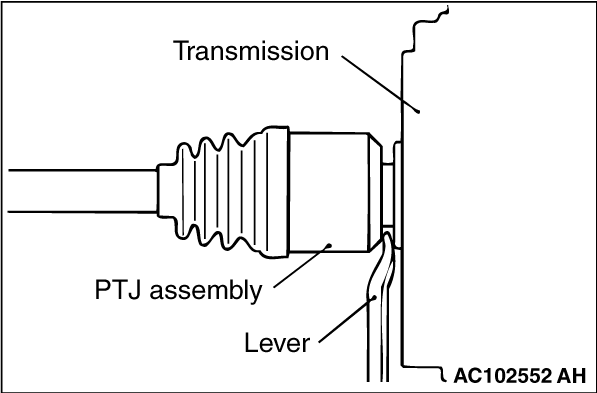
|
3.Insert a lever between the transmission case or transfer and driveshaft assembly, and
then pull the driveshaft assembly out from the transmission.
|
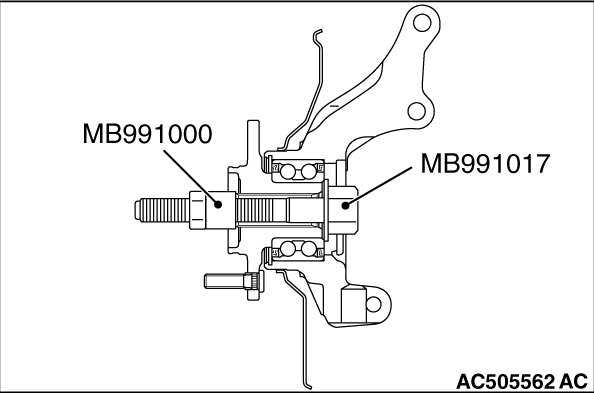
|
| caution |
Do not apply the vehicle weight to the wheel bearing with the driveshaft assembly removed.
If, however, the vehicle weight shall be applied to the bearing (in order to move the vehicle),
tighten the following special tools to the specified torque (160 ± 16 N·m):
- Spacer (MB991000)
- Front hub remover and installer (MB991017)
|
|

|
| caution |
- The wheel speed detection magnetic encoder collects metallic particles easily, because
it is magnetised. Make sure that the magnetic encoder should not collect metallic particles.
Check that there is not any trouble prior to reassembling it.
- When installing the driveshaft, make sure that it does not contact with the wheel
speed detection magnetic encoder (integrated with the inner oil seal) to avoid damage.
- Care must be taken to ensure that the oil seal of the transmission is not damaged
by the spline part of the driveshaft assembly.
|
|
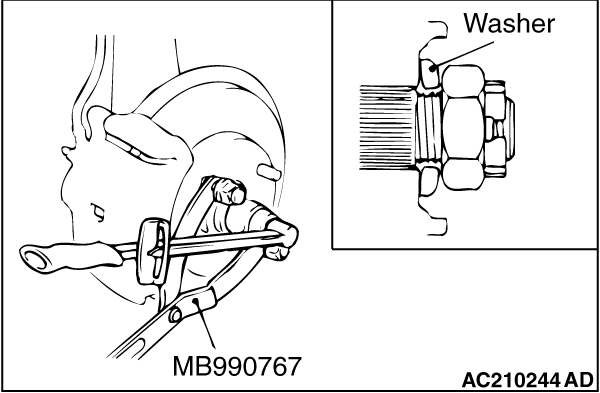
|
1.Incorporate the driveshaft assembly washer as shown in the illustration.
2.Using special tool front hub and flange yoke holder (MB990767), tighten the driveshaft
nuts. At this time, tighten the nuts within the specified torque range considering the final
tightening.
Tightening torque: 144 - 176 N·m
3.If the pin holes do not align with the pins, tighten the driveshaft nut (less than
200 N·m) and find the nearest hole then bend the split pin to fit it.
|
 .]
.]








